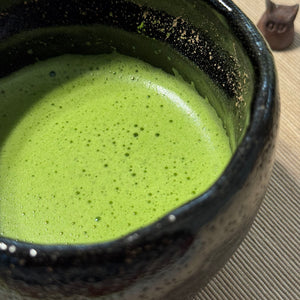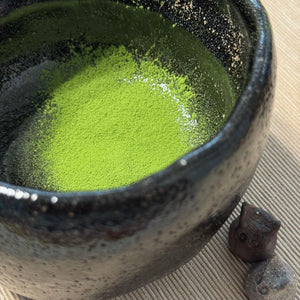
Matcha Kiwami
Tax included
Shipping calculated at checkout
In stock
Pickup currently unavailable
Matcha Kiwami — Sakamoto • Shibushi, Kagoshima (ceremonial)
Kiwami Sakamoto's ceremonial grade matcha. The shading and processing skills based on gyokuro give this a balanced, round profile: pure umami, soft sweetness, minimal tartness - a stable, reliable "ceremonial" experience.
Origin & data
- Producer: Sakamoto Tea Garden (Shibushi, Kagoshima)
- Category: ceremonial matcha
- Cultivar: depends on the batch (not always indicated by the manufacturer; modern, umami-focused lines are common)
- Grinding: stone mill (tencha → matcha)
Flavor profile
- Scent: fresh green, slightly sweet
- Taste: round, pure umami; subtle sweet base, very low bitterness
- Finish: coolly clean, elegantly sweet
Recommended preparation
Usucha
- 2 g matcha + 60–70 ml, 75–80 °C water • 15–20 sec frothing
Koicha
- 4 g matcha + 30–35 ml, 60–65 °C • slow, stirring until thick
Note: Kiwami is a balanced, "safe choice" for ceremonial use; less extremely dense and layered than Zen.
Sakamoto matcha – which one should I choose?
| Matcha | Use | Flavor profile | Intensity | Recommended preparation |
|---|---|---|---|---|
| Sae | Everyday cup; matcha latte is outstanding | Sweet, creamy, soft umami; minimal bitterness | Umami: ★★★☆ • Sweetness: ★★★★ • Body: ★★★ | Usucha: 2 g + 60–70 ml, 75–80 °C Latte: 2–2.5 g + 40 ml (80 °C) → 180–200 ml milk/sweetened beverage |
| Kiwami | Ceremonial ; both usucha and koicha are beautiful | Round, clean umami; elegant, low astringency | Umami: ★★★★ • Sweetness: ★★★☆ • Body: ★★★☆ | Usucha: 2 g + 60–70 ml, 75–80 °C Koicha: 4 g + 30–35 ml, 60–65 °C |
| Zen | High-end ceremonial ; special occasions | Extremely silky, deep umami; crystal-clear sweetness | Umami: ★★★★★ • Sweetness: ★★★★ • Body: ★★★★ | Usucha: 2 g + 60–70 ml, 75–80 °C Koicha: 4 g + 30–35 ml, 60–65 °C |
Choice according to taste
- “Soft, sweet and creamy” – Sae (especially for latte).
- “Balanced, assuredly ceremonial” – Kiwami .
- “The deepest umami and texture possible” – Zen .
Usage situations
- Daily ritual / latte → Sae
- Hospitality / usucha-koicha demonstration → Kiwami
- Gift / Holiday → Zen
- Organic, with good shading: sweet, umami, clean – it competes .
- Organic, with weaker nutrients: greener, leaner, slightly more tart.
- Non-organic (average): fuller umami, creamier sweetness.
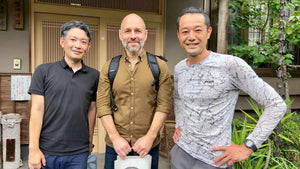
Personal contact
Our teas don't come from wholesale warehouses or unknown sources. We travel to the small producers we source from – whether it's a Japanese family tea garden, a Chinese mountain village or an oolong maker in Taiwan.
Stories
We meet them in person, learn their story, see how they care for their plants, and how they process the fresh leaves.
These experiences are the soul of our teas. This way, not only is the quality guaranteed, but also the fact that behind each cup there is a real person, a real story.
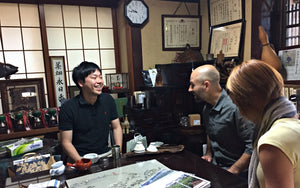

Direct
This direct relationship is valuable to us. Not only because of the excellent tea, but because we believe that trust, respect and personal presence are what make the tea drinking experience truly special.
Teavolution Tea Blog
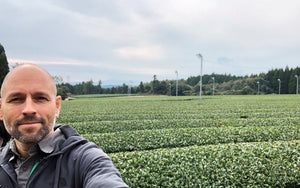
Oct 2, 2025
Sencha tea
Read more

Sep 21, 2025
Matcha hiány Japánban
Read more
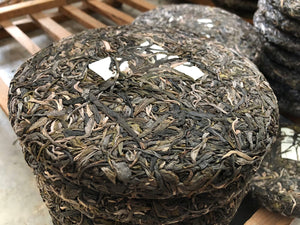
Mar 18, 2025
Puer tea, puerh or pu-erh
Read more
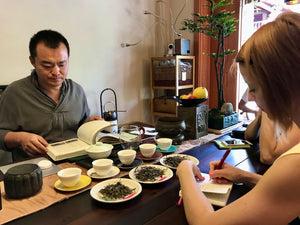
Mar 18, 2025
Types of tea
Read more
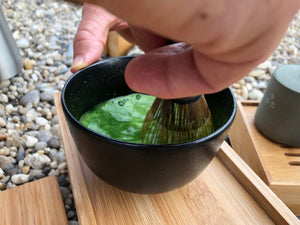
Mar 18, 2025
What is matcha tea?
Read more

Mar 18, 2025
Oolong tea (Wulong tea)
Read more

